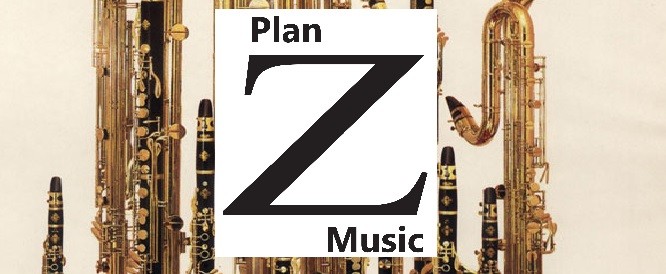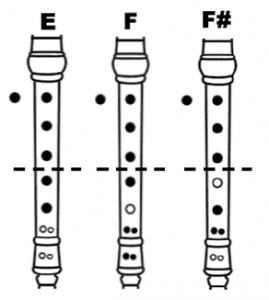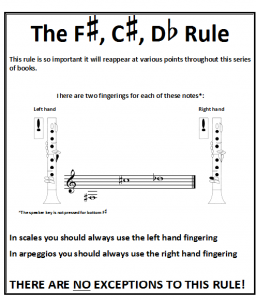Oh dear, I seem to have incurred the wrath of the militant faction of the Yorkshire recorder-playing fraternity. No…sorry, I can’t do this: to take my mind off scales and arpeggios, I have been reading The Mirror and the Light, the third book in Hilary Mantel’s brilliant Wolf Hall trilogy, and I can’t dispel the mental picture of those pesky northern papists, whipping up support and fomenting trouble in Yorkshire. It’s a wonderful read, but go slowly: it is densely packed.
On 12th May I posted a short video on YouTube entitled Why Scales are so Hard (click here to view). I linked this to my Facebook page and boosted the post. With hindsight, I think I should have targeted my audience more specifically as I received several comments from guitar players telling me that a) scales are easy, and, b) they were very good at playing them. I welcomed their comments and pointed out that they were actually reinforcing my case, which was very much about the challenge of clarinet fingerings (watch the video and you will see). There was much good-natured banter and it quickly became clear that the video had turned out to be my most successful so far.
Then came this from a recorder player called Nigel Martin:
I take great exception to your comments about the recorder being a limited instrument. You really need to do your research before you post untrue comments. The recorder has a near 3 octave range and beyond which is something that you obviously didn’t know about so please research!! The recorder also has a vast repertoire!!
Perhaps unwisely, I responded:
I am aware of the recorder repertoire and know that there are many fine players of the instrument. Nevertheless, more than two centuries of woodwind keywork development attest to the fact that wind players found the keyless model insufficient for the needs of the developing orchestra, especially as much of the technique used by recorder players to obtain the full chromatic range simply does not work on larger bored instruments. I regret your indignation: I am sure you would agree with me that embarking on a childish feud about who plays the better instrument would be futile and embarrassing.
Back he came:
My comments to you were simply about your untrue comments about my instrument the recorder and not about any other woodwind instrument! You are the one who even mentions pitting one woodwind instrument against another, not me. I regret your ignorance in the first place by stating that the recorder is a limited instrument! I find this to be appalling and I regret your arrogance! I certainly have no intention of arguing with you at all but please bear in mind that when you make a provocative statement about a musical instrument a response will occur. I do wonder what my colleagues and friends in ERTA, society of Recorder Players and professors of recorder at the UK Conservatoires/ Universities would think if they heard your posting about the recorder being a “limited instrument”?
At this point I started to smell a rat and responded:
I think this must be a wind-up! Best wishes!
Well, I was wrong about that:
For you to think that this is a wind up certainly says a lot about you! I can assure you that this is no wind up at all! Why would you suggest that?
I started to think it might be best for me to extricate myself from this, and responded:
If your colleagues and friends in ERTA take my comments as a provocation, I expect to hear from them. I fear your main aim is to whip up pointless antagonism and I am not disposed to continue this dialogue.
On he went:
I have no aim in any way, shape or form apart from challenging your ignorance about the recorder! As a committee member and Yorkshire Regional Representative for ERTA UK I certainly find your comments about the recorder to be provocative and ignorant. Your arrogance in making ignorant comments about the recorder is beyond belief! I will be discussing your video clip with ERTA members in our meetings as we often come across bad attitudes like yours about our beloved instrument!!
Then he added:
Just to inform you that I have shared your video clip on my timeline. May you receive many more responses!!
He then posted a link to my page on his Facebook page and my Video duly received five “dislikes” on YouTube. Perhaps rashly, I made a final effort to lay the matter to rest:
Your hyperbolic language and sense of personal affront led me to conclude that your comments were made in jest. I now see that this is not the case and I am concerned at your failure to apply an appropriate degree of intellectual rigour in this matter. I shall try to set out my position in clear and simple terms. I described the recorder as a simple woodwind instrument. This is not a qualitative judgement, but a statement of objective fact. The recorder as illustrated in my video has no moving parts. However precisely the dimensions of its bore and tone-holes are calculated, it is simple in design because it dates from a time when wind players and makers had not yet developed the technology to add key mechanisms. I made clear that recorder players had evolved ingenious solutions such as half-holing and lowering notes by closing holes further down the bore, and I can assure you that I admire the considerable skill the best players develop to produce playing which is even and expressive even though they have to negotiate many tricky cross-fingerings. I explained that instrument makers eventually moved towards a different solution to accessing the full chromatic range, namely adding keywork, and this was the basis for the development of the instruments which have now become established as the regular woodwind section of the symphony orchestra. Again, this is simply a statement of fact, not a claim for superiority of some instruments over others. Clearly, the recorder did not become redundant with these new developments, any more than the harpsichord was made redundant by the piano, though this nearly happened. In the twentieth century we saw a great revival of early music. Scholarly research uncovered a huge wealth of repertoire and fine players of early instruments honed their skills to ever greater heights to perform this music, bringing the authentic sound to the modern ear. Some composers were then inspired to write contemporary pieces for these instruments, and I have much admiration for the skill and dedication we see so often in this area of music-making. Where qualitative judgements were made was in the growing consensus that the recorder lacked the power, tonal range and agility to be effective in the orchestra as it had become at the end of the enlightenment period. You may wish to condemn composers and other musicians for making this judgement, I cannot. I am concerned that the tone of your comments has become emotive and, at times, bordering on threatening. You are, of course, free to discuss this with your professional association and, indeed, any other party. I trust that, in so doing, you will ensure that neither I nor Plan Z Music will be misrepresented.
Back he came:
I most certainly don’t need you to give me a history of woodwind instruments as I play other woodwind instruments whilst the recorder is my main instrument. I challenged you on your comments when you stated that the recorder is a limited instrument. Again you are the one who has taken this out of all proportion. May I suggest that you research about the new modern recorders that are now available. I don’t condemn any musician or composer so stop making things up to suit your arrogance!! You need to start supporting recorder players and not attacking and demeaning me by showing off your arrogant behaviour! My only comments to you has been about your statement about the limits of the recorder. Please update your old fashioned, archaic view and accept that the recorder is an equal, valid musical instrument that is on a par with any other woodwind instrument!
At that point I decided that enough really was enough. Mr Martin’s comments were becoming increasingly emotional in tone (so many exclamation marks!) and alarmingly ad hominem. Nothing was to be gained by goading him further.
All instruments have their limitations, and players draw on considerable skill and dedication to overcome these limitations. My own, boëhm-system clarinet is the result of a couple of centuries of piecemeal development and presents many mechanical challenges which must be overcome. If you set out to redesign the key system from scratch, you would probably come up with something very different, but trying to do so does not seem to be worth the effort. I remember seeing a clarinet on display in the excellent Musical Instruments Museum in Brussels, which was the result of a complete, logical rethink; and the museum is where it remains.
I admire recorder players and the distinctive way in which they are able to bring an authentic voice of the time to early music. I am aware that players have also found ingenious ways to cover the full chromatic range for more recent compositions, but those of a scientific inclination may enjoy this article: click here
I detected some resonance in a quote I stumbled on the other day:
Human beings from time immemorial have felt the need to owe primary allegiance to a collective body of one kind or another – be it a tribe, a city, or some alternative ethnic, geographical or cultural unit; and the impulse to assert the identity of the group, however large or small it may be, can easily lead – especially when feelings of insecurity are involved – to aggression and intolerance.
Christopher Duggan, The Force of Destiny, a History of Italy since 1796, Penguin Books 2008.
Quite so.






